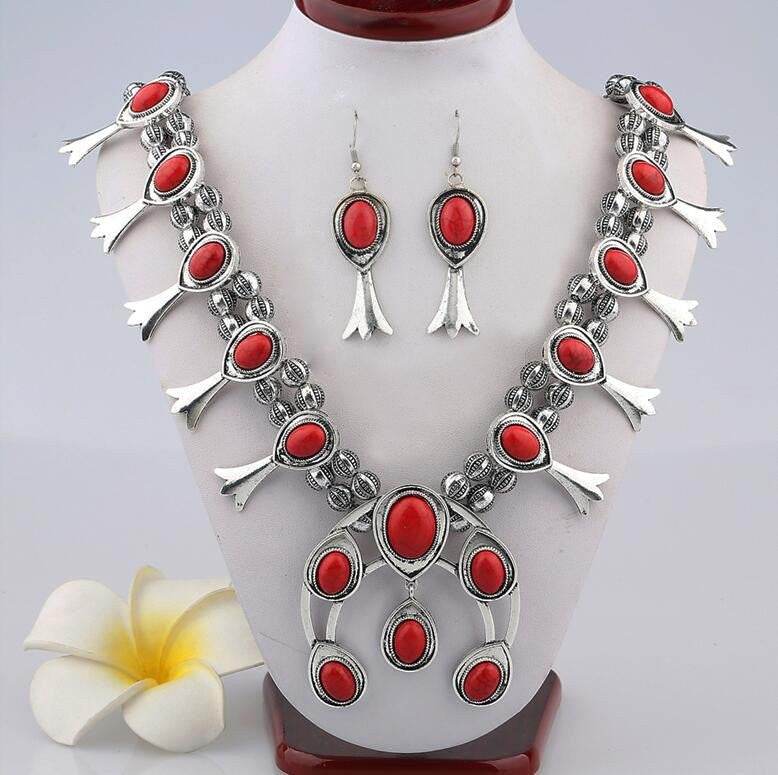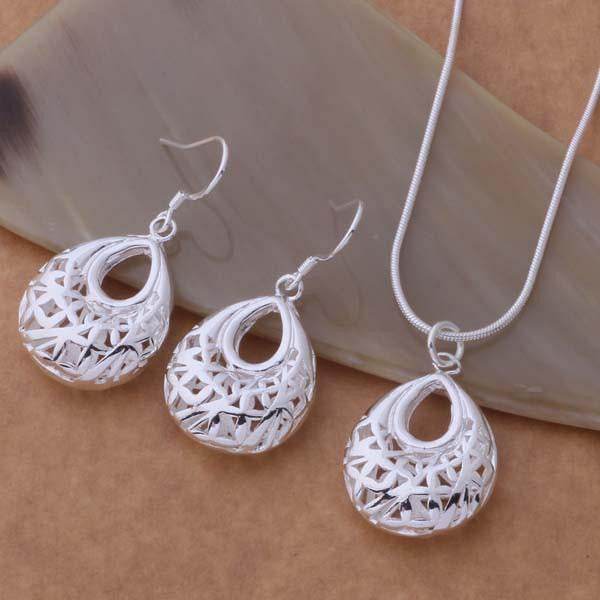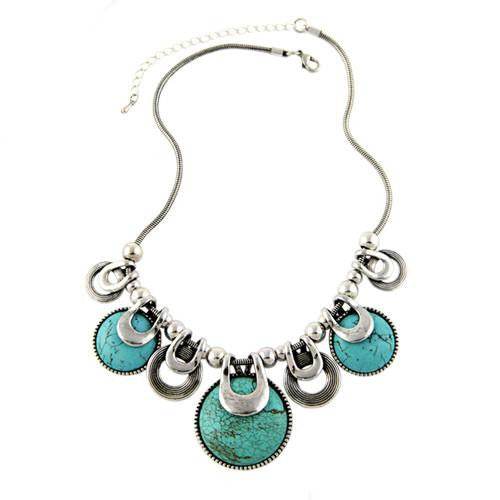News
Squash Blossom Necklace: a Piece of the Past
There are many designs in western style jewelry which are directly influenced by Native American culture, especially from the South West. One design speaks volumes, both in its striking beauty and the deeper meanings connected to it. I am talking about the Squash Blossom necklace, iconic jewelry of the Navajo. These large, silver and turquoise beaded necklaces have a unique story which connects us with the past, and perhaps surprisingly, with a variety of cultures.
 When first made, and worn by Navajo people (and other regional tribes such as the Zuni and Pueblo), the Squash Blossom necklace was primarily a ceremonial piece. Much of our jewelry and ornamental wear of today began this way. These necklaces were made and worn with reverence for the spiritual path of the wearer. The main components of this necklace are symbolic in nature. Symbols have been used since the stone age to communicate ideas.
When first made, and worn by Navajo people (and other regional tribes such as the Zuni and Pueblo), the Squash Blossom necklace was primarily a ceremonial piece. Much of our jewelry and ornamental wear of today began this way. These necklaces were made and worn with reverence for the spiritual path of the wearer. The main components of this necklace are symbolic in nature. Symbols have been used since the stone age to communicate ideas.
The most common form of symbols today is our alphabet.
Jewelry and other ornamental wear worn in days gone by, also spoke through their symbols. Often these symbols would aid in healing, protecting and guiding those who understood what they meant. There are many universal symbols, images which have been used across time and around the world. which represent similar ideas. Within the Squash Blossom necklace there is the universal symbol, the Naja.
Naja is a Navajo word meaning curved, or crescent shaped. Traditional 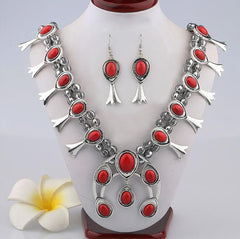 Squash Blossom necklaces have a centerpiece pendant which is a Naja. There are various accounts for the meaning behind this symbol as it relates to Navajo use, but in terms of its use in these necklaces, there appears to be a connection to Spanish influences from the time of the Conquistadors, which in turn provides a connection farther back to the Moors, who ruled Spain for over 800 years. For the Moors the crescent moon represented protection against the “evil-eye”, or negative forces. It was traditional to have metal-worked crescent shaped emblems adorning their horses. The Spanish in turn took up this fashion, which was then discovered by Native tribes like the Navajo.
Squash Blossom necklaces have a centerpiece pendant which is a Naja. There are various accounts for the meaning behind this symbol as it relates to Navajo use, but in terms of its use in these necklaces, there appears to be a connection to Spanish influences from the time of the Conquistadors, which in turn provides a connection farther back to the Moors, who ruled Spain for over 800 years. For the Moors the crescent moon represented protection against the “evil-eye”, or negative forces. It was traditional to have metal-worked crescent shaped emblems adorning their horses. The Spanish in turn took up this fashion, which was then discovered by Native tribes like the Navajo.
During the 1800s and into the 1900s, jewelry artistry became an important and vital commodity for the Navajo. Such was the demand for their beautiful craftsmanship, a full industry was created. The Squash Blossom necklace was one of the most desired pieces. It is said that the name squash blossom was put into use to describe the style of flower-like beads which line each side of the Naja pendant. The Navajo description of this bead style says it is “the bead that spreads out.” It is possible this was translated into a “squash blossom” in an attempt to give a simplified name to English speakers. Whatever occurred, the name has stuck, and anyone who loves the Native influences of Western Style jewelry knows just what this design is.
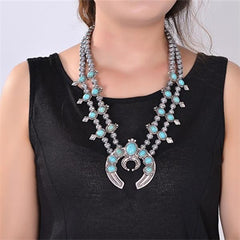 There is a possible symbolic connection of the squash blossom beads themselves. As the spreading petals of the bead certainly look like squash blossoms in shape, they are also reminiscent of pomegranate fronds, another Spanish import. Food has always played an important role in our lives; in the past the annual cycles of planting, growing and harvesting literally ruled our daily lives. It is no big surprise to see important foods immortalized in symbol on ceremonial ornaments.
There is a possible symbolic connection of the squash blossom beads themselves. As the spreading petals of the bead certainly look like squash blossoms in shape, they are also reminiscent of pomegranate fronds, another Spanish import. Food has always played an important role in our lives; in the past the annual cycles of planting, growing and harvesting literally ruled our daily lives. It is no big surprise to see important foods immortalized in symbol on ceremonial ornaments.
Today, jewelry is often worn for the sheer pleasure it brings the wearer. If you are attracted to the striking, traditional designs of Native American jewelry, a squash blossom necklace is one you will want to add to your collection. When you are adorned in this type of necklace, you can’t help but feel connected to the past, and to others, maybe now, not so surprisingly, from around the world.
If you love Western Style jewelry like I do, I invite you to check out our products at West Coast Cowgirl, where you will find a wide variety of jewelry options, including a lot of silver, from classic motifs, to more modern cowgirl bling. Whether you are looking for a gift for that special someone or ready to treat yourself to something new, products are added regularly, so be sure to check back often.
How to Clean Your Silver Jewelry
 The majority of Western-style jewelry includes silver. This brightly shining metal has become synonymous with the west, stemming from the great silver boom of Colorado in the late 1800s. Since that time, many a cowgirl (and boy) have worn pieces of silver jewelry. But many is also the piece of silver which becomes tarnished over time, and in need of a good cleaning.
The majority of Western-style jewelry includes silver. This brightly shining metal has become synonymous with the west, stemming from the great silver boom of Colorado in the late 1800s. Since that time, many a cowgirl (and boy) have worn pieces of silver jewelry. But many is also the piece of silver which becomes tarnished over time, and in need of a good cleaning.
You may think it is difficult to keep your silver clean, but it isn’t. You do not have to take your items to a jeweler when there are do-it-yourself methods which can work just as well. As a soft metal, silver becomes stained with tarnish over time. Tarnish is a thin layer of corrosion which accumulates on some metals. This happens through long-term exposure to our everyday atmosphere and by coming into contact with other substances, such as oil and dirt from skin.
Some everyday household products work well for cleansing your silver. These methods  offer an inexpensive and less toxic or harsh approach to cleaning your jewelry. Plain toothpaste (without any special additives like a whitener), can be used to gently remove tarnish. The easiest way is to use a soft chamois or polishing cloth with a dab of toothpaste. Gently rub your silver jewelry and watch how the tarnish will transfer to the cloth.
offer an inexpensive and less toxic or harsh approach to cleaning your jewelry. Plain toothpaste (without any special additives like a whitener), can be used to gently remove tarnish. The easiest way is to use a soft chamois or polishing cloth with a dab of toothpaste. Gently rub your silver jewelry and watch how the tarnish will transfer to the cloth.
A Caution Tip: Watch for scratching, start on the underside or back of your jewelry. If the toothpaste has an abrasive, it could scratch.
A salt and aluminum foil bath will also clean your silver jewelry. Check out this Wiki-How tutorial for making this cleansing solution. It is best to use a bowl for this method, as opposed to a sink. Stainless steel in particular can damage silver. Salt is a gentle cleanser, ideal for soft metals. When you include some bits of aluminum foil in a salt-water bath, a chemical reaction occurs to tarnished silver, returning accumulated silver sulfide (the tarnish) back into simply silver. Baking soda can be used instead of salt as well.
A Caution Tip: If your silver jewelry includes gemstones, a salt bath may be too abrasive. For these more delicate pieces, I do recommend having them cleaned by a jeweler.
 There are also silver polishes and “dips” on the market. While these can work, be sure to follow directions carefully, as they can also be damaging. In particular, silver dips contain a variety of harsh chemicals, which will damage silver if exposed to it for too long. Whatever method you use to clean your silver jewelry, be sure to give it a good final rinse in warm water, dry thoroughly and store your silver away from other items.
There are also silver polishes and “dips” on the market. While these can work, be sure to follow directions carefully, as they can also be damaging. In particular, silver dips contain a variety of harsh chemicals, which will damage silver if exposed to it for too long. Whatever method you use to clean your silver jewelry, be sure to give it a good final rinse in warm water, dry thoroughly and store your silver away from other items.
A Caution Tip: Many substances are damaging to silver, including paint, stainless steel and rubber. Do NOT wear rubber gloves when cleaning your silver. Nitrile gloves, which are latex and rubber free, are a great substitute, and available at pharmacies everywhere, or online.
If you love Western-Style jewelry like I do, I invite you to check out our products, West Coast Cowgirl, where you will find a wide variety of jewelry options, including a lot of silver, from classic motifs, to more modern cowgirl bling. Whether you are looking for a gift for that special someone or ready to treat yourself to something new, products are added regularly so be sure to check back often.
The Allure of Turquoise in Western Jewelry
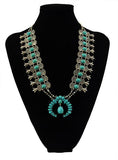 If there is one iconic stone which speaks volumes towards what makes Western style jewelry a specific fashion, it is turquoise. From the way it pairs with silver remarkably well, to the historical connections with America’s old west, turquoise is a stone everyone can love and appreciate. There is also a lot more to this soothing, light blue stone that you may imagine.
If there is one iconic stone which speaks volumes towards what makes Western style jewelry a specific fashion, it is turquoise. From the way it pairs with silver remarkably well, to the historical connections with America’s old west, turquoise is a stone everyone can love and appreciate. There is also a lot more to this soothing, light blue stone that you may imagine.
When it comes to wearing jewelry, we choose what we are drawn to. Many are drawn the beauty of turquoise, especially those who enjoy the romance of the old west. This gemstone is found in drier climates, so the American west is one of the best known places to find it. Turquoise can also be found as far south as Mexico and Chile, and as far east as China, Tibet and Iran. Ornamental jewelry from all of these regions features turquoise with their own style, making for a wide range of beautiful and striking designs to choose from.
The colors of turquoise vary, from pale, sky-blue to a greenish-blue and many hues in  between. As a natural stone, turquoise is also affected by its surroundings. Different minerals can be seen in stones, and some will even affect the color. These differences give each region where turquoise is mined, a unique look and feel to the stones. A piece of stunning, light blue turquoise with a mosaic of black or brown minerals blooming across the surface, needs no ‘improvement” to the wow factor. Mineral variations add to this vibrant stone, and can include copper, iron and zinc.
between. As a natural stone, turquoise is also affected by its surroundings. Different minerals can be seen in stones, and some will even affect the color. These differences give each region where turquoise is mined, a unique look and feel to the stones. A piece of stunning, light blue turquoise with a mosaic of black or brown minerals blooming across the surface, needs no ‘improvement” to the wow factor. Mineral variations add to this vibrant stone, and can include copper, iron and zinc.
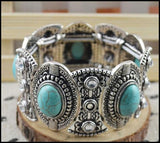 Turquoise has long been held as a stone of protection by different cultures. Some Native Americans even used turquoise in their arrows so they would fly straight and sure. Turquoise is the birthstone for those born in December; a piece of turquoise jewelry makes and ideal birthday, or holiday gift. An important tip to know about turquoise: this soft stone can fade by too much exposure to sunlight, perfumes and cosmetics. Use a soft chamois cloth to gently cleanse your turquoise, and store in a soft pouch or jewelry box when not wearing.
Turquoise has long been held as a stone of protection by different cultures. Some Native Americans even used turquoise in their arrows so they would fly straight and sure. Turquoise is the birthstone for those born in December; a piece of turquoise jewelry makes and ideal birthday, or holiday gift. An important tip to know about turquoise: this soft stone can fade by too much exposure to sunlight, perfumes and cosmetics. Use a soft chamois cloth to gently cleanse your turquoise, and store in a soft pouch or jewelry box when not wearing.
If you love Western Style jewelry like I do, I invite you to check out our products, West Coast Cowgirl, where you will find a wide variety of jewelry options, from classic motifs to more modern cowgirl bling. Whether you are looking for a gift for that special someone or ready to treat yourself to something new, products are added regularly so be sure to check back often.


